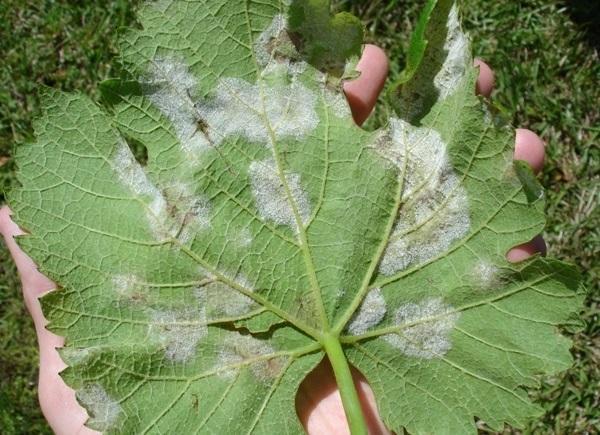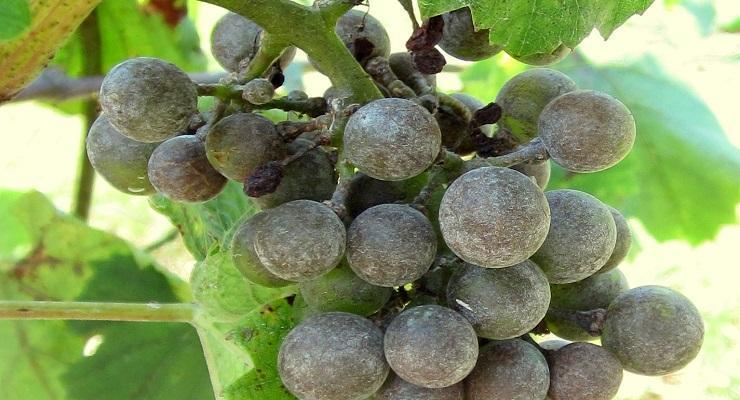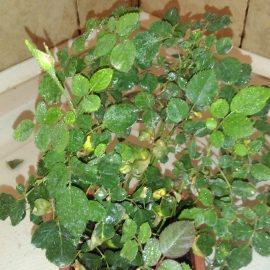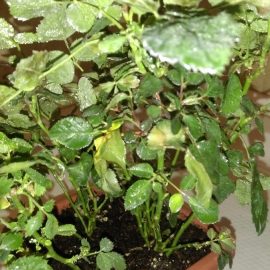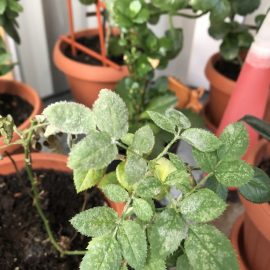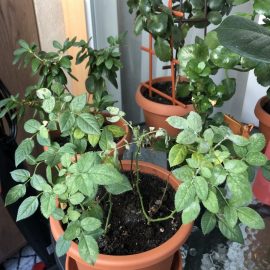Grapevine powdery mildew (Uncinula necator) – identify and control
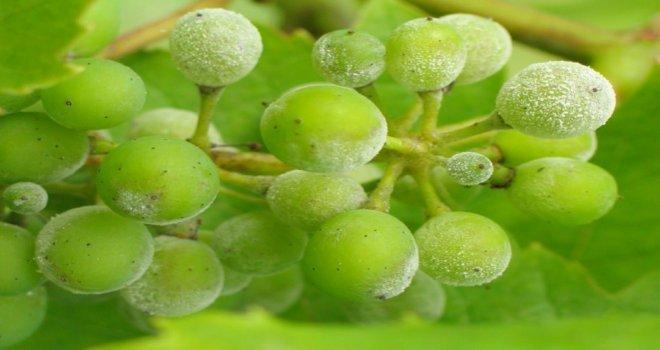
Grapevine powdery mildew, Uncinula necator, is a disease native to North America and is considered one of the most damaging diseases in vineyards.
Symptoms. Grapevine powdery mildew attacks leaves, young shoots, grape clusters, from spring to late autumn. On the leaves, there is a fine mycelium, like a spider’s web, with a powdery appearance. It enlarges and covers both sides of the leaf. Under the powdery dust, the tissues turn brown or slightly red, but the leaves do not fall until autumn. The non-lignified shoots have the same whitish spots, are sometimes dusty, don’t grow, and the leaves wrinkle.
The attack on the clusters causes them to turn brown and then dry out during a drought. The powdery dust also covers the berries., which, as a result of the increase in volume, often crack. Then their contents drain out, providing an excellent environment for the development of other fungal diseases. In dry weather, the berries dry out, the seeds stand out, and the grape bunches, destroyed, the smell of mold. In rainy autumns, the berries attacked by powdery mildew are covered with gray rot, the damage can be very large. Towards autumn, on the powdery dust, the presence of resistance fructifications is sometimes noticed. These appear as small, black dots. The late attacks on the ripe depreciate the quality of the grapes. Numerous brown spots form on their surface.
The pathogen is Uncinula necator. The fungus overwinters as a resistant mycelium that can remain on the canes or more frequently in the buds. In the spring, once the grapevines start to grow at the beginning of the growing season, the mycelium begins to vegetate. It spreads and differentiates conidiophores and conidia through which primary infections occur. The disease is favored by higher temperatures, around 20-25 ° C, when the incubation period is 7-10 days, a situation often encountered in dry summers.
After the infections have occurred, the evolution of the disease is favored by temperatures between 18-25 ° C and moderate relative humidity, when the attack on grapes causes particularly great damage. The spores do not germinate in the water droplets, and the heavy rains prevent the evolution of the disease.
Prevention and control. To reduce the source of infection in the vineyard, it is recommended that the attacked shoots be pruned and destroyed by burning. Also, it is very important the correct application of maintenance work (pruning, weed control), as well as the administration of fertilizers, avoiding excess nitrogen. During the growing season, it is recommended to apply treatments with specific fungicides.
Recommended products
-
You can find products on a different store
Change Store -
You can find products on a different store
Change Store -
You can find products on a different store
Change Store -
You can find products on a different store
Change Store -
You can find products on a different store
Change Store -
You can find products on a different store
Change Store -
You can find products on a different store
Change Store -
You can find products on a different store
Change Store -
You can find products on a different store
Change Store -
You can find products on a different store
Change Store -
You can find products on a different store
Change Store -
You can find products on a different store
Change Store -
You can find products on a different store
Change Store -
You can find products on a different store
Change Store -
You can find products on a different store
Change Store -
You can find products on a different store
Change Store -
You can find products on a different store
Change Store -
You can find products on a different store
Change Store -
You can find products on a different store
Change Store -
You can find products on a different store
Change Store -
You can find products on a different store
Change Store -
You can find products on a different store
Change Store -
You can find products on a different store
Change Store -
You can find products on a different store
Change Store














































































































































































































































































































































































































































